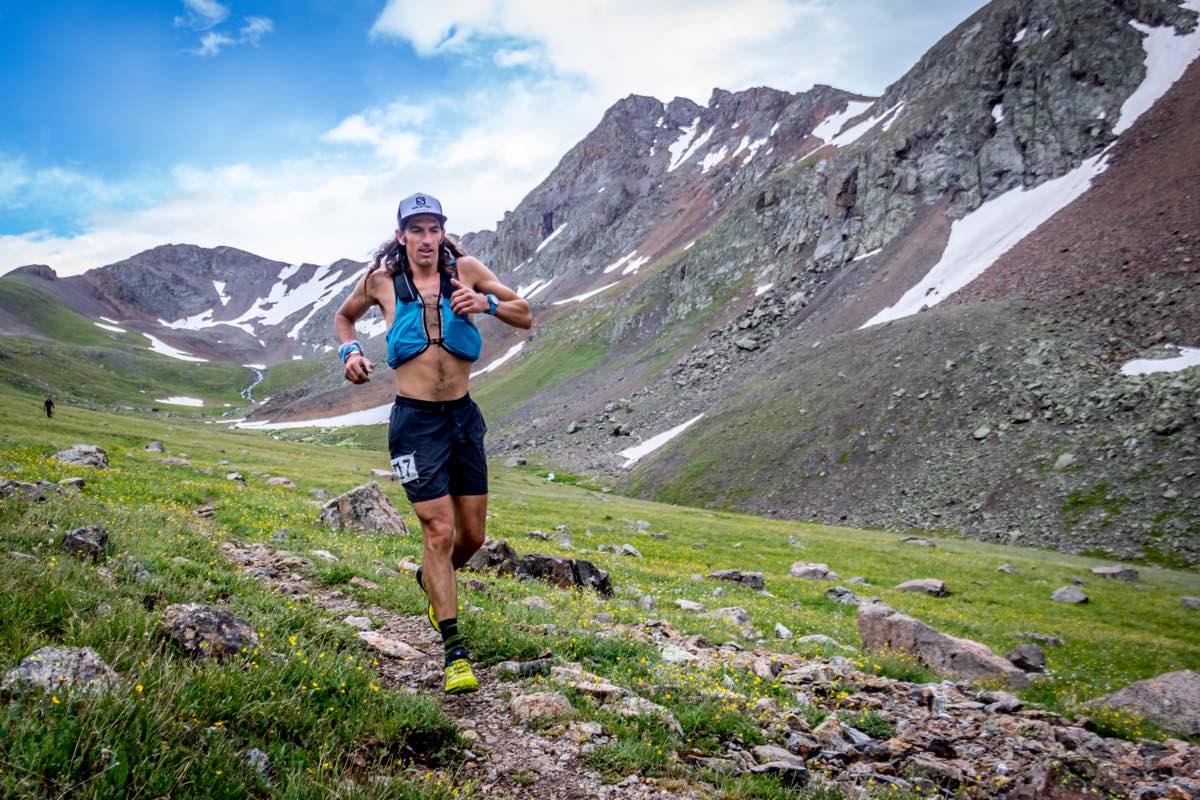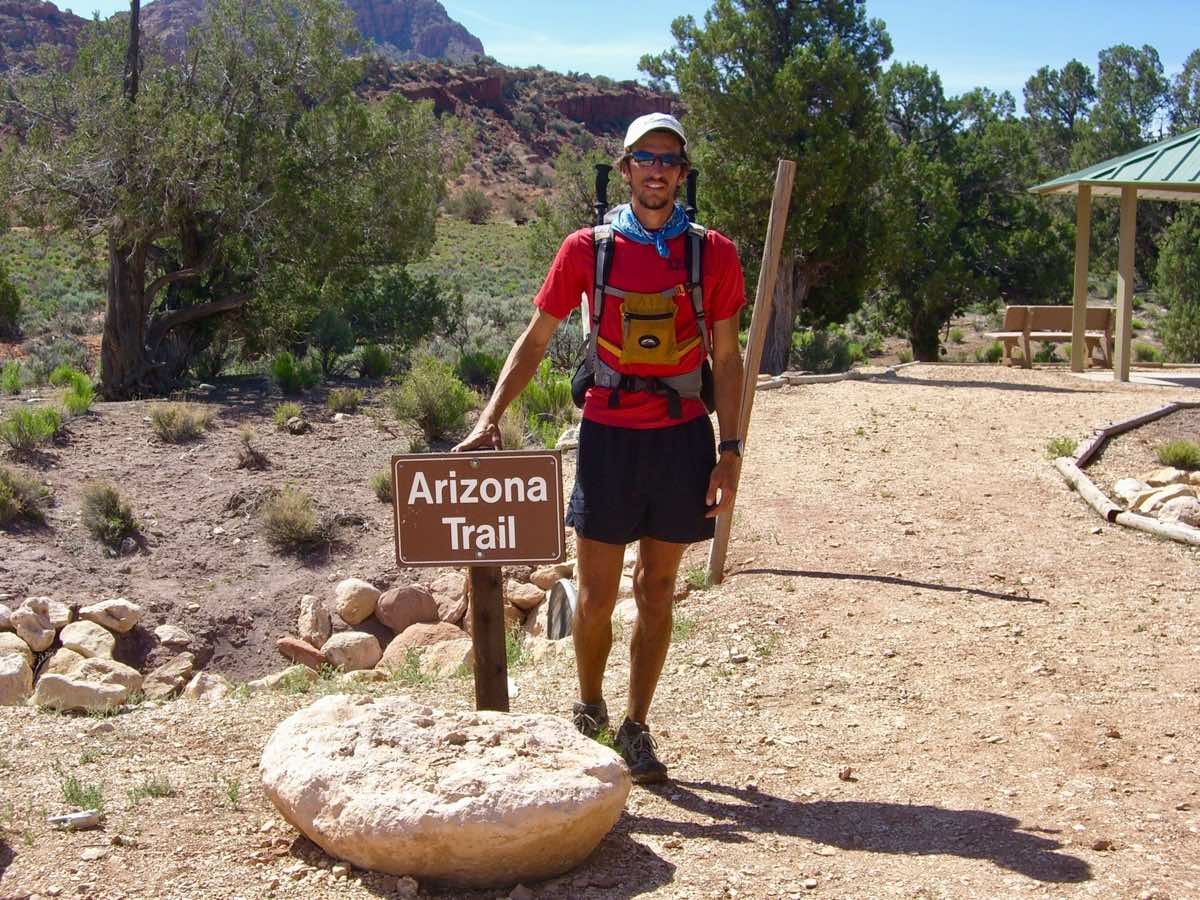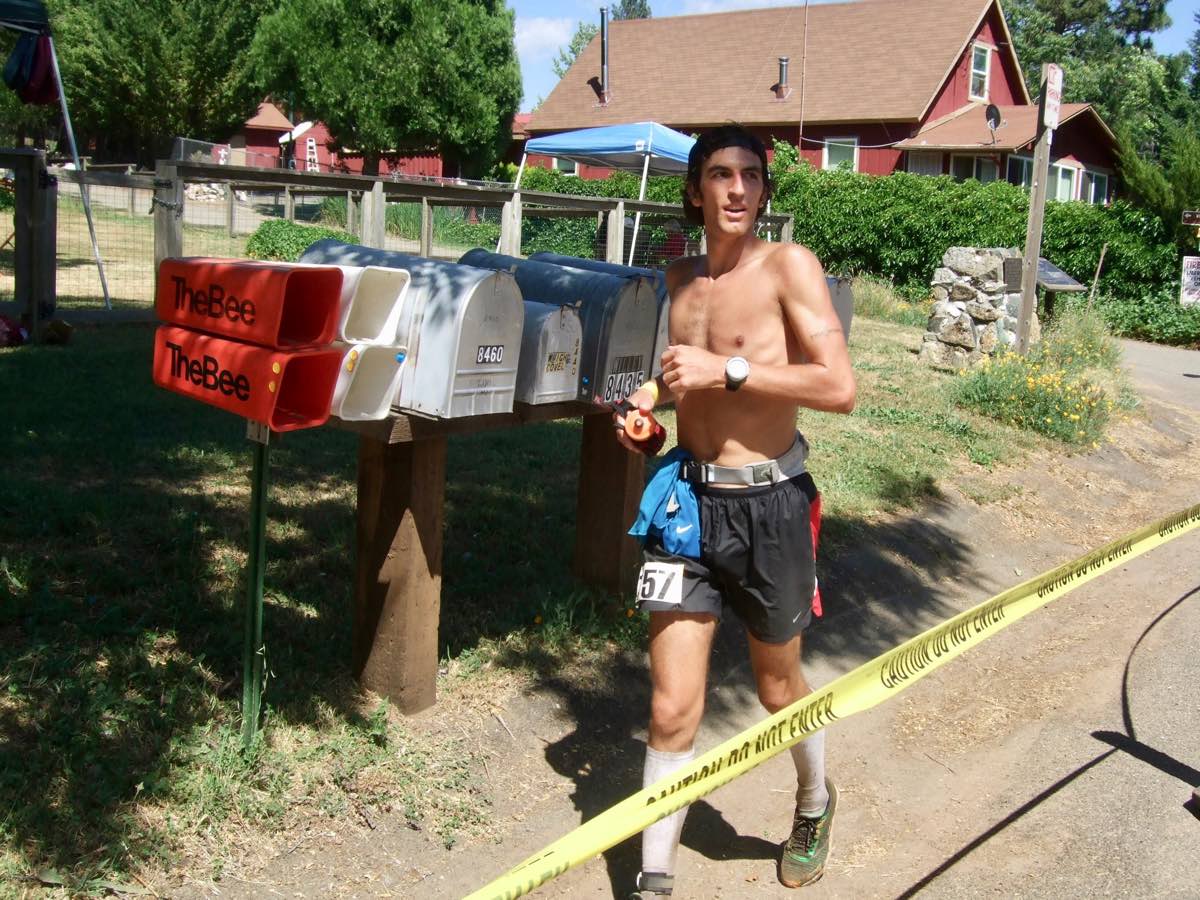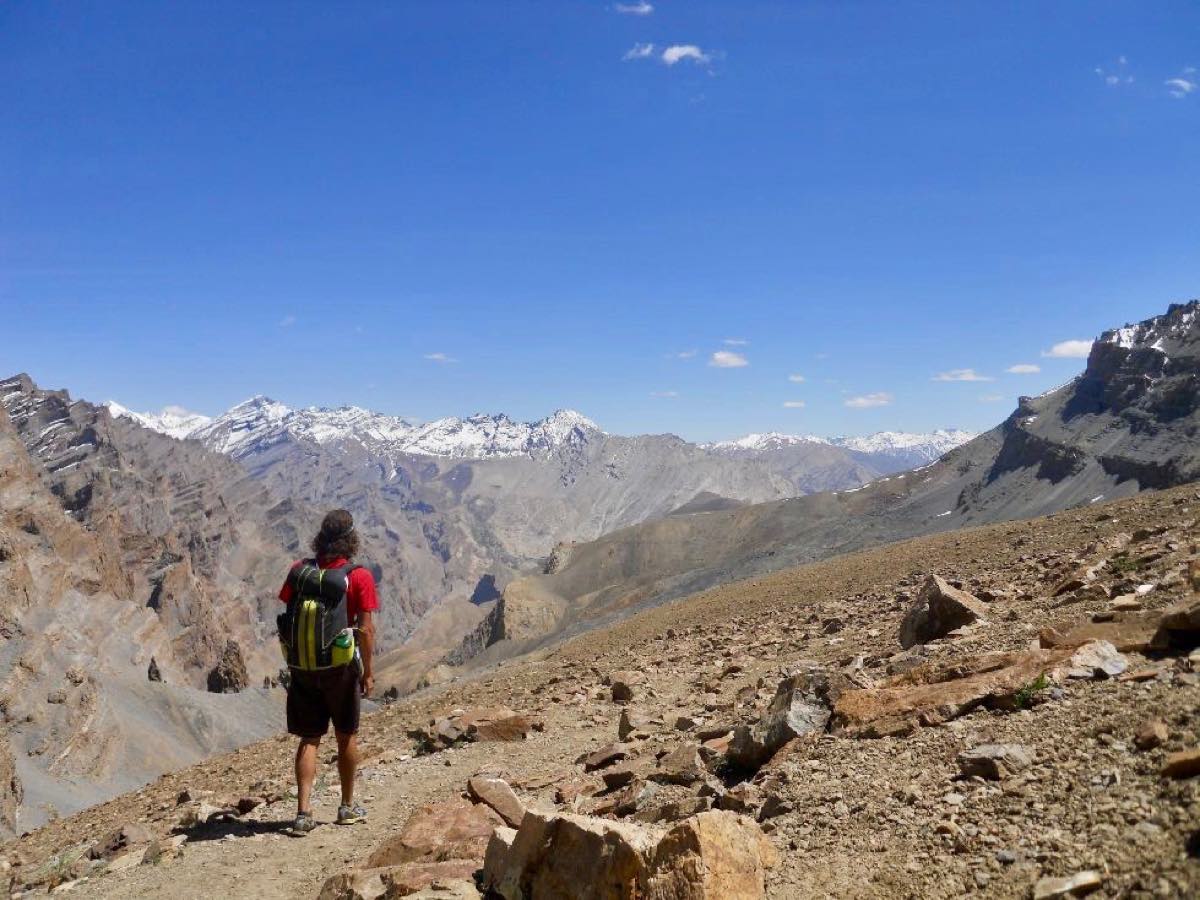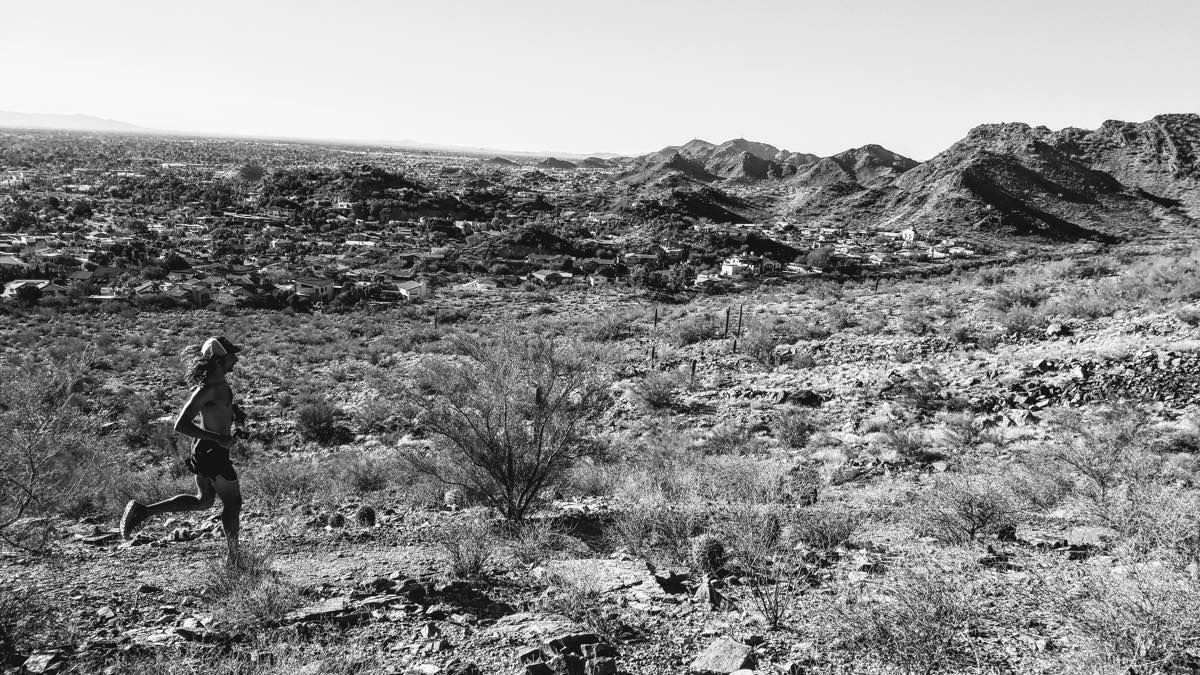Jamil ‘Jam Jam’ Coury is a multi-talented leader in the trail running and ultrarunning community. We’re just as likely to see him at the start line of a 100 miler as we are rapping in a spoof film or hopping on a flight to Chamonix, France to film UTMB. His identity is equal parts athlete, business owner, and artist.
For the unfamiliar, Coury founded the trail-event production company Aravaipa Running, which organizes close to 30 annual events scattered around the southwestern United States. He’s also the founder of the lifestyle brand Run Steep Get High and the creator behind the Mountain Outhouse YouTube channel. For 14 years, Coury has bit into the most challenging races of the sport, from the Hardrock 100 to the Tahoe 200 Mile, and from the survivalist-style Barkley Marathons to the historic Western States 100. And he finishes fast. Not to mention he’s also a father and he co-owns Freak Brothers Pizza, a small Phoenix, Arizona-based pizza-making business, with Nathan Coury, his younger brother. Some would label him a serial entrepreneur.
Simply put, he’s all in.
“I’m involved in as many ways as I can be in this world [of trail running and ultrarunning]. I had instant love with the sport, and then I wanted to give back and organize events. I continue to follow that passion today to wherever it leads me,” Coury says.
His first taste of running was around the high-school track in Glendale, Arizona, where he grew up. In Coury’s words, it was a love-hate relationship: “The 800 meters was my favorite event, because it was so hard. Maybe my diet affected me, but I would throw up after every track meet. I gave it my all. It was difficult but also rewarding enough that I kept going.”
After high school, Coury jumped into races while attending Arizona State University. That’s when he joined the Phoenix-based run club Arizona Road Racers and started running on trails. He entered a few low-key trail races and eventually learned about longer-distance races through word of mouth. The thoughts of running far and uphill piqued his interest, there’s actually such a thing as a 24-hour race?
“I had developed my love of the outdoors with [Boy] Scouting days. Then trail running was this mix of exploring nature—seeing so much and not carrying much, in a day—and pushing myself,” Coury recalls. It wasn’t long before he signed up for his first ultramarathon, the 2005 Kachina Relief 12 Hour Night Run. Coury, then 20 years old, and his two younger brothers, Nick and Nathan, all entered the event and each covered about 50 miles. His involvement in the trail and ultrarunning community continued to grow as a racer, crew member, and volunteer.

Jamil (second from the left) at his first ultramarathon in 2005. Also with him are his brothers Nick (far left) and Nathan (far right). All photos courtesy of Jamil Coury unless otherwise noted.
Coury wrapped up his degree in accounting and economics in 2007. The ensuing year, he worked a desk job, an “uninspiring” accounting position, he says. Coury realized pretty quick that he needed to make a change. He took a break from work to thru-hike the Arizona Trail. But post-trek he never went back. Instead, he focused 100% of his energy on what he was most excited about, the Javelina Jundred. A friend and race director had asked him to take over and direct the race that fall.
“I devoted myself full-time to putting on the 2008 Javelina Jundred. I treated [the opportunity] like graduate school. To me, the best way to learn is by doing. I didn’t pay myself and donated the proceeds back to park where the race is held. Once my funds were running out the next summer, I decided to launch Aravaipa Running to fund races,” recalls Coury. His vision was to create a series of trail running races at the regional parks in his home state of Arizona.
In a huge way, starting his own company was par for the course. In the 1970s, Coury’s dad and uncles started and ran a grocery store, followed by an automobile shop. Coury’s grandfather also owned a grocery store. “I come from a lineage of operating your own businesses. At first I wanted to be a grocer. Then I simply knew I wanted to own my own business, but I didn’t know what it would be,” says Coury.
It’s been a decade now since Coury launched Aravaipa Running, and the event selection has branched into each month of the year, and to locations in Colorado and Utah.
“I love creating events and experiences for people, and I like being challenged as an organizer, so I will continue to push the limits of the size of some of our events,” says Coury. For instance, the Black Canyon 100k usually has 750 entrants, and Javelina Jundred ping pongs back and forth with the Leadville Trail 100 Mile as the U.S. race with the highest number of 100-mile finishers per year.

Jamil (left) and Nick finishing the 2007 Angeles Crest 100 Mile. This was Jamil’s first 100-mile finish, and Nick’s second.
“It takes an enormous number of people and resources to put on events and to do it well. I take pride that our company and staff can pull it off,” says Coury.
In addition to Coury’s idea to develop races with longer distances, and to expand the number of entrants at existing races, he also has his eyes set on an entirely new style of endurance events. We’re talking the two-wheeled kind. Mountain-bike events will be born under the brand in 2019.
Part of the inspiration for adding bike events is Coury’s own personal race focus. This year, he’s training for the Whiskey Man Series, which combines three races, the Whiskey Basin 88k trail run, Whiskey Off-Road 50 Mile mountain-bike race, and Whiskey Row Marathon trail run, into a series goal. (The latter two races are not organized by Aravaipa.) Racers who finish all three races earn the title of Whiskey Woman or Whiskey Man. And yes, Coury created the triple-threat concept, in 2016. Along with tackling the race trilogy, he hopes to also create a documentary about the series, which might include footage of Coury’s own inaugural go.
Beyond becoming a Whiskey Man, Coury has more personal race goals this year, including finishing his fifth Hardrock 100 and racing Tor des Géants. All that makes for a very big year, but we haven’t yet mentioned his number-one mission: finishing all five loops at the Barkley Marathons.
A brief recap: Said ultra consists of five consecutive marathon-ish-distance loops through the wilds of eastern Tennessee. Folks navigate the mostly off-trail route with no GPS to collect pages from books hidden about the route as proof of their successful navigation. There are no aid stations or course markings. The weather is often rough. By the end, runners need to push over close to 67,000 feet of vertical gain within the 60-hour cutoff. This year will be Coury’s fifth attempt. So far, he’s successfully completed three loops multiple times, and once he made it all the way through a fourth, but he arrived back to the loop’s start/finish eight hours after the cutoff to officially complete that loop and continue on.
“I’ve always been obsessed with the purity of the Barkley and how the event strips away hand holding. The terrain is extremely challenging, and I love the navigation and finding the books. When you’re out there in the moment with your adrenaline pumping, it’s exciting and chaotic. To me, it’s the ultimate challenge for ultrarunning. I definitely want to know what it feels like to complete five loops. I hope to add myself to that list sometime…. I respect anyone who has finished it,” says Coury.

At the 2015 Barkley Marathons, where he completed four of the race’s five loops, though the fourth one didn’t officially count as he finished after the cutoff. Photo: Leon Lutz
Regardless of the season or year, Coury always has his eyes on the horizon for inspiration to fuel his next goal be it on trail, in front of the camera, or behind the lens. With 43,000 people following Run Steep Get High on Instagram and more than 12,000 subscribers to the Mountain Outhouse YouTube channel, it’s clear that Coury has a unique talent for telling stories, and a thread that usually involves humor and lightheartedness.
“I didn’t even know I had that side of me—[storytelling] has become an outlet for me, as well as running,” Coury reflects. “It’s important to have fun with running and to not take ourselves too seriously, especially with long-distance trail runs. And, I like to make people laugh.”
But juggling so many talents aren’t without challenge. It can be difficult to maintain balance between the three-way pull of his passion-driven world.
On a regular day, Coury plays with his son in the morning: they might read books or go to the zoo, for instance. Then, he heads to the office for business tasks like uploading photos from the weekend’s race, training new employees, and jumping into the race-director meetings to make sure all needs are met. Three race directors divvy up the Aravaipa events, so there’s a constant revolving door of logistics. After that, Coury might meet with an accountant to run over numbers for Freak Brothers Pizza. Then, he squeezes in a two-hour run before sitting at his laptop to script and film his weekly Mountain Outhouse news show.
“It’s like, ‘Holy crap, it’s going to be 9 p.m. when I finally start writing.’ I’ll stare at the screen until midnight, fall asleep at the office, and not get it done. It’s also hard under these time restraints, because you have to be in the right mindset and mood to create!” Coury says.
The first thing that goes when time runs out is his miles. “I can go too far on the work side, where I’m not getting out there on the trails as much as I should for my own personal health or training. It can be easy for me to skip my runs. But when I do take that time to do long runs or explore new areas, it reignites the passion that got me down this path in the first place. Being an athlete helps me remember the source of my motivation, inspiration, and excitement,” says Coury.
Hayley Pollack, president of Aravaipa Running, says, “Jamil provides our community with benefits that are more obvious, such as quality events, an entertaining weekly news show, and a more-than-simple glimpse into his life via video. However, it’s how he accomplishes all of it that is most amazing. He juggles so many duties and tasks. He manages future plans that are often up in the air. He’s constantly thinking 10 steps ahead. And he truly cares about the sport and how it can advance in sustainable ways.”
Looking ahead for himself more personally, Coury would like to prioritize more time on the trails, which can ironically take a backseat to his entrepreneurship and artistry. “I’m not a professional athlete by any means, but I would like to become more competitive again as an athlete. It’d be cool to train to my potential. I’ve hit all of the bucket-list races, so now my goal would be about competing at a higher level.”
One thing’s for sure, no matter where Coury stands—if he’s running the race on foot or running around behind the scenes—we can expect him to show up.
Call for Comments (from Meghan)
Of all of the things Jamil Coury has his hands in, what do you have experience with and what do you most enjoy? Have you seen him at one of Aravaipa’s events? Running a race himself? By watching his YouTube channel? Share your Jamil Coury story!
